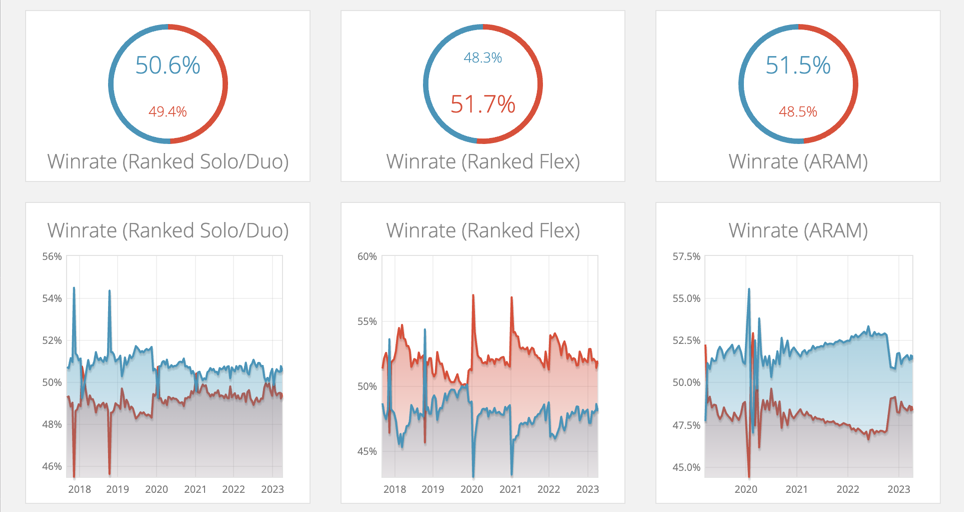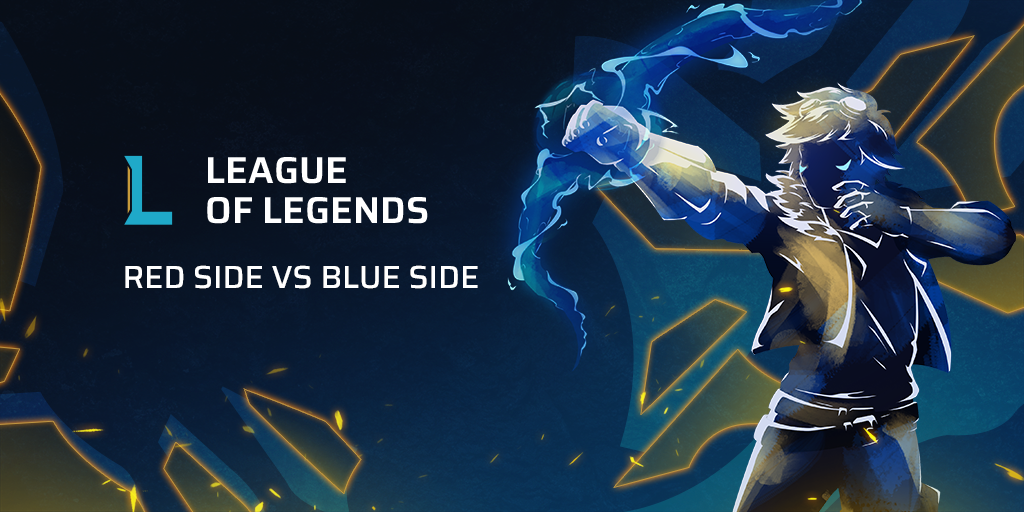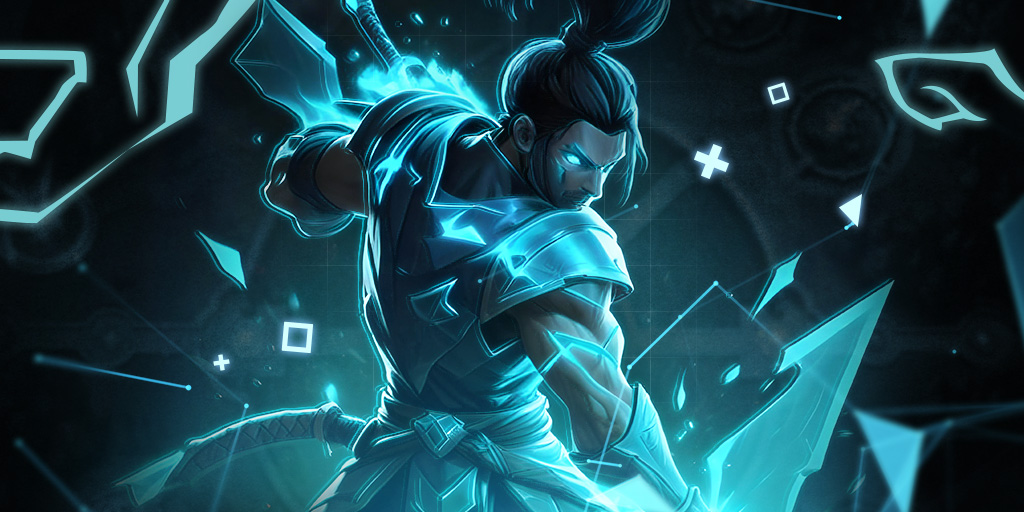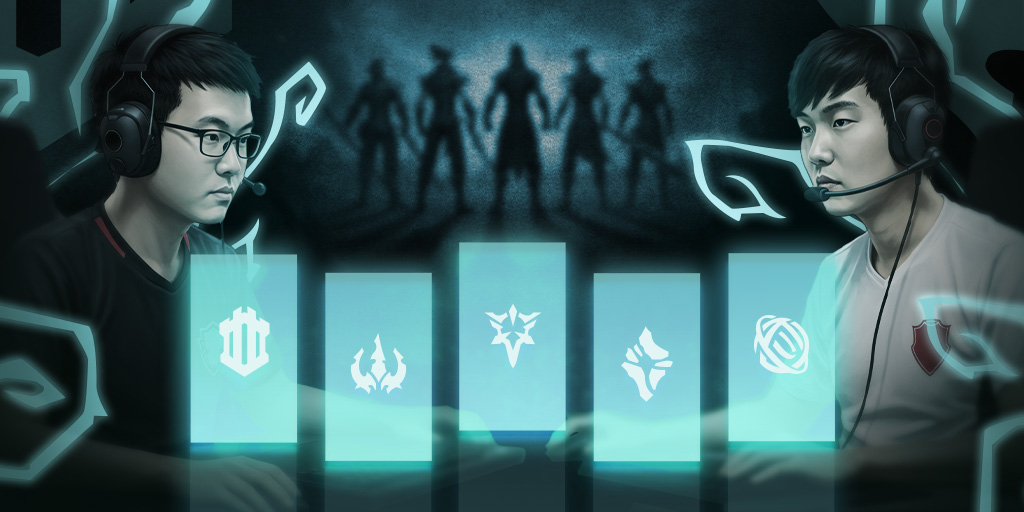Side selection is a very interesting part of League of Legends, especially when you consider its impact from a competitive standpoint. As a topic, it’s rather inconsistent in its prevalence within the general discussion of game balance, often only mentioned by a team that have recently lost an important match. But as side selection also determines draft order, it can have big implications on the outcome of games. The priority of each side often depends on the current meta.
A good example of a time where the selection of sides was a topic of hot debate is the MSI 2022 final between T1 and Royal Never Give Up (RNG). The context being that RNG had taken the first place seeding in the Rumble Stage, coming out with an eight win, two loss record. They bested T1 by one game as they resided in second, with a seven to three record. On this basis, RNG were able to select their semi-final opponent – Evil Geniuses (EG) - who they beat. Then, coming into the final, they were afforded the opportunity to select sides for the first game.
Now, throughout the course of a best-of series within League of Legends that takes place outside of a regular season, most Riot tournaments award the team with the higher seeding side selection for the first game. Each subsequent game, the side priority is given to the loser of the previous game. In this case, each game the losing team picked Blue Side for their following match. The series went to five games, with Blue obtaining a 100% win rate. During the press conference that followed the gruelling five-game series, T1’s head coach at the time, Choi "Polt" Seong-hun, stated that: “The reason we lost was as I just said - because we weren’t able to play on the Blue Side three times.”
Throughout the tournament, it’s true that Blue Side possessed a 53.2% win rate. This means that of the 77 games played, 41 of them were won by the team awarded the Blue Side of the map. It seems that, for all intents and purposes, Polt’s take was correct, based on the results at least. However, once you remove the five Blue Side wins that occurred during the final, you have 36 Blue Side wins over 72 games. A 50/50 split. But as Nick "LS" De Cesare might say, this would be putting too much weight on results-based analysis. A sample size of a mere 72 games, or even 77, is severely lacking when it comes to the statistical analysis of data.
So where can we find more data? Solo Queue data from the last five years gives Blue Side a 1.2% edge with a 50.6% win rate. In contrast, Ranked Flex gives Red Side a 51.7% win rate over the same time frame. However, with the concept of communication in Solo Queue being as mythical as a unicorn, and Ranked Flex not being much better, it’s hard to compare this to pro play. It’s safe to assume that a team of players with a coach, and potentially an analyst - and more - would be much better at leveraging the advantages that the draft can provide. They should also be a lot more creative in the time they commit to improving and working together, right?

The meta is a very broad and subjective topic. If we remove the charged emotions from the disagreement between ex-pro player, analyst, and caster Marc Robert "Caedrel" Lamont, and analyst, streamer, and ex-coach “LS” about the champion Renekton, and his presence within pro play, we have a perfect example. Two points with their own merits can result in two very different perspectives on the usefulness of champions. “Caedrel”, coming off the back of a reasonably lengthy stint as a pro player, had been exposed to the merits of Renekton from the perspective of a pro. Renekton was, for a long time, a champion that had strong wave clear, got early pressure in Top Lane, could act as a front line, had a point and click stun, and could absorb a decent amount of pressure. Having a lane with priority provides your Jungler with more space to move, lets you have priority within that lane to move first without losing gold and experience, and allows you to setup a dive on a stacked wave. Having strong wave clear makes it harder for the enemy Laner to stack up waves in order to dive you, in the instances where they have priority. And finally, a point and click stun opens the door for champions that are skill shot reliant but have a high damage output, because a reliably stunned target is a lot easier to hit. Hence the age-old LCK pairing of Renekton and Nidalee. The benefit Renekton has here, compared to a champion like Ryze for example, is that he is AD. This means that if your Top Lane and Jungler are a mix of AD and AP damage, and you have the ability to dive, it’s even harder for your opponent to build resistances against you.
“LS” on the other hand, would drive home the point that Renekton was not worthy of being so highly prioritised in the draft phase. It was not uncommon for teams to blind pick him Top on Blue Side, opening for a counter pick. The argument being that, yes, his decent wave clear was sufficient enough for him to survive in a lane without priority. Yes, he could survive bad matchups. But given that Renekton’s strengths lie in the laning phase, if you can’t take advantage of these strengths and enter the mid-game without a lead, he becomes somewhat hard to make use of. He’s closer to a Bruiser than a Tank, so he isn’t the best frontline. Pros were often building Goredrinker over Prowler’s Claw to simply survive, and therefore there was no burst potential. By the time the mid to late game team fights came, he was being blown up by the prevalent meta picks. AD Carries reaching their item spikes would kill him before he had a chance to engage and make use of his stun in order to setup his team. It wasn’t that Renekton was terrible, it was that he wasn’t the best, or unpunishable as a blind pick. For instance, a Red Side fifth picking Ornn into a blind Renekton would often have a better scaling and tankier frontline, with more utility. They were eventually capable of outputting more damage, with zone control to boot.
The point is that two separate viewpoints on a champion can alter your entire attitude towards their usefulness in a draft, and when or where they can be picked. How does this link to Blue or Red Side? Well, Blue Side, as you probably know, always has first pick. Red Side always has the final counter pick. So, in a meta with more than three champions considered ‘blindable’ or ‘overpowered’, as Renekton was, Red Side cannot block them all with their three initial bans. This means that Blue can ban a few potential counter picks, and have priority on the remaining overpowered champions. However, in a meta where there are no clear beneficiaries of recent patches, or enough of them that several of them can make it through the initial ban phase, being able to leverage your counter picks to gain a larger number of winning lane matchups is more likely to give you victory in the early game. It also gives you more of a chance to snowball, leading to an all-out victory.
While this is a topic of heavy debate, the general consensus among professional players is that being Blue Side offers you a higher chance of getting priority in lane. In short, get the strong picks and dominate the game. A mind more used to the realms of an MMORPG or Trading Card Games might be more accustomed to the idea of min-maxing, and will tell you that a face up draft is always beneficial for the one who goes second, as they can react more easily to events as they occur.



